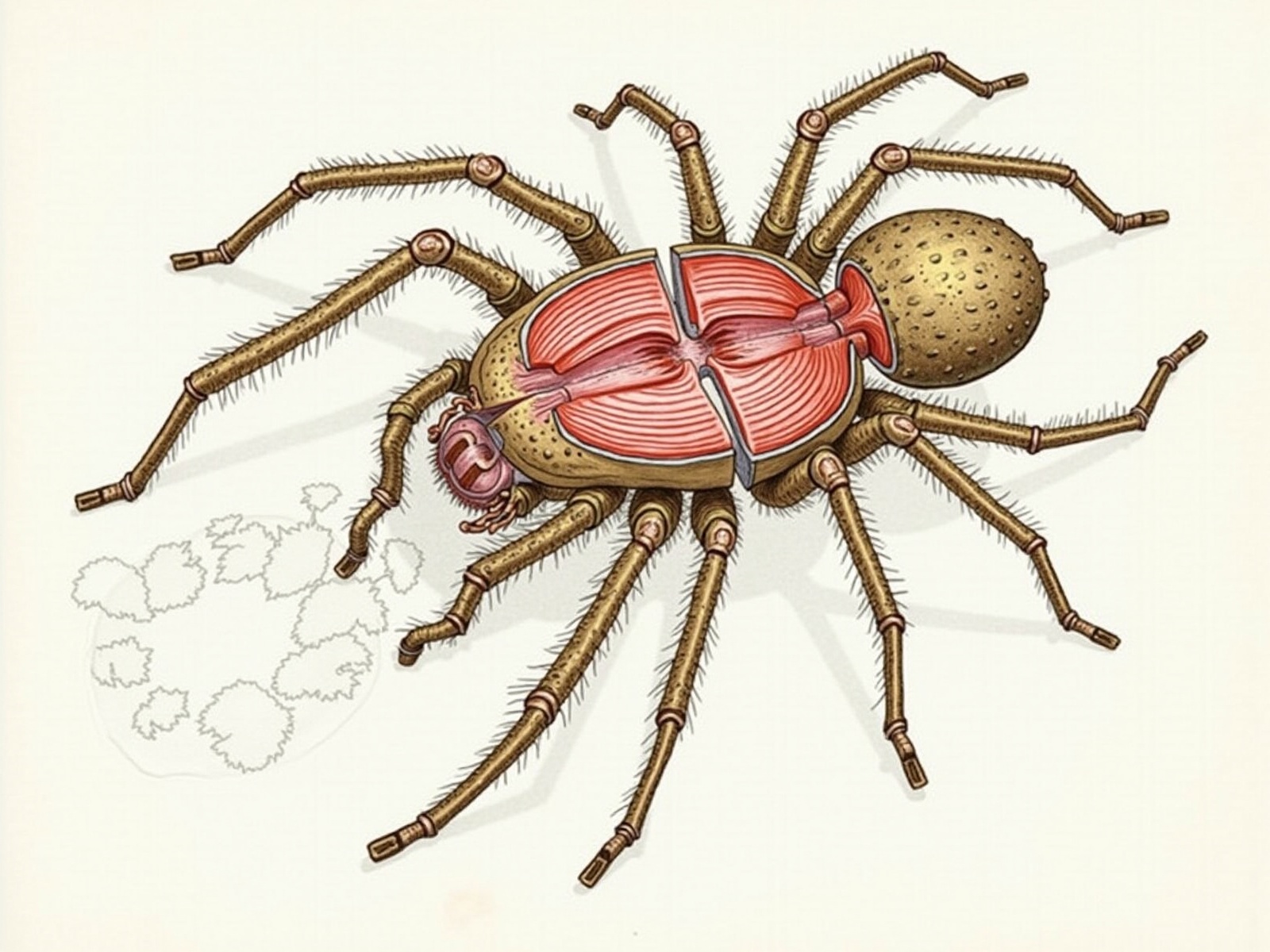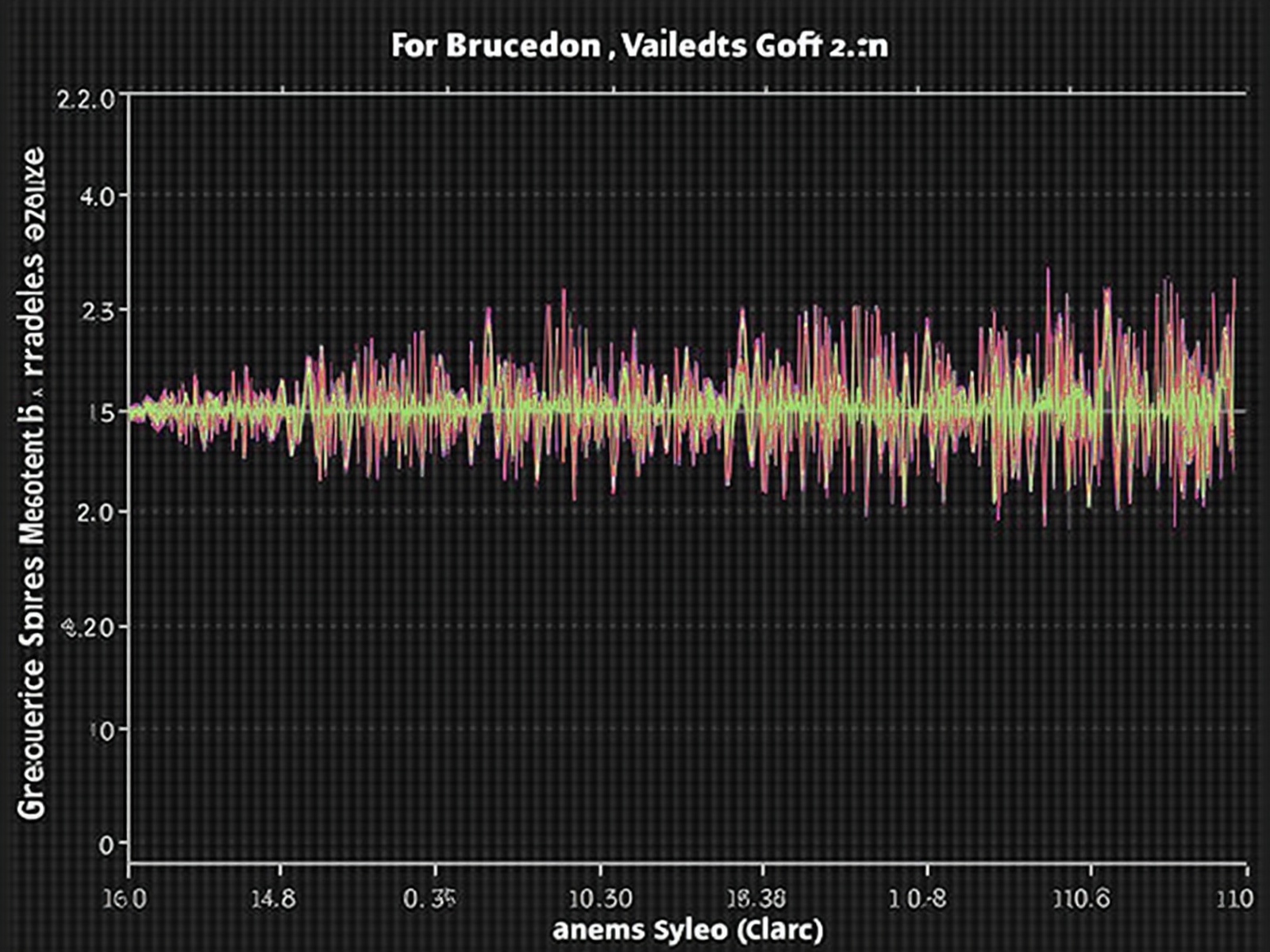Acoustic Properties of Barking Spiders
Understanding the science behind the bark
Introduction to Barking Spider Acoustics
The distinctive sounds produced by barking spiders (Selenocosmia crassipes and related species) have intrigued scientists for decades. Since the founding of the Barking Spider Research Institute in 2009, we have made significant advances in understanding the acoustic properties, production mechanisms, and biological significance of these sounds.
Despite a persistent skepticism in parts of the scientific community regarding whether these sounds are indeed produced by spiders—with some erroneously attributing them to human digestive processes—our extensive field recordings, controlled laboratory studies, and high-speed video analysis have conclusively demonstrated the arachnid origin of these vocalizations.
This page presents our key findings on the acoustic properties of barking spiders, including sound production mechanisms, frequency analysis, and the behavioral context of different call types.

Sound Production Mechanisms
Stridulation: The Primary Sound Mechanism
Our research has identified that barking spiders produce sounds primarily through a process called stridulation—the rubbing together of specialized body parts to create vibrations. Unlike insects such as crickets that typically use wing-against-wing stridulation, barking spiders employ several distinct stridulation mechanisms:
Cheliceral Stridulation
The primary mechanism involves the spider rubbing specialized ridges on its chelicerae (jaws) against complementary structures. High-speed microscopy has revealed the presence of a series of fine ridges resembling a microscopic washboard that, when scraped, produces the characteristic "bark" sound.
Palpal-Femoral Mechanism
A secondary sound production system involves rubbing specialized setae (hairs) on the palps against ridged surfaces on the front legs. This mechanism is typically employed during specific behavioral contexts, particularly mating displays.
Abdominal Percussion
In addition to stridulation, some species can produce sounds by rapidly tapping their abdomen against the substrate—a behavior we've termed "abdominal percussion." This mechanism creates lower-frequency sounds that travel effectively through solid materials and can serve as territorial signals.

The Amplification System
Perhaps most remarkable is how these relatively small arachnids produce sounds audible to humans at distances exceeding 10 meters. Our research has identified specialized resonance chambers within the cephalothorax that amplify the vibrations created through stridulation.
Using micro-CT scanning and 3D acoustic modeling, we've created detailed maps of these acoustic chambers, revealing structures analogous to the resonance chambers found in musical instruments. The volume and shape of these chambers vary between species, correlating with differences in sound intensity and frequency.
Acoustic Analysis: Breaking Down the Bark
Frequency Characteristics
Acoustic analysis of thousands of recorded barking spider sounds has revealed consistent patterns in their frequency characteristics:
- The fundamental frequency of most barking spider sounds falls between 1.2-3.5 kHz, with species-specific patterns
- Harmonic overtones typically extend up to 12 kHz in some species
- Notably, Australian Selenocosmia crassipes produces sounds with distinctive frequency modulation patterns, starting at a higher frequency (3.2-3.8 kHz) and rapidly dropping to 1.8-2.2 kHz within 80-120 milliseconds
- Low-frequency components (200-500 Hz) are present in substrate-conducted signals produced by abdominal percussion

Temporal Patterns
The timing and pattern of barking spider sounds contain significant information related to behavioral context:
| Sound Type | Duration (ms) | Inter-call Interval (s) | Behavioral Context |
|---|---|---|---|
| Defensive Bark | 150-300 | 0.8-2.5 | Threat response; predator deterrence |
| Territorial Bark | 400-650 | 3.0-8.0 | Territory establishment; intruder warning |
| Mating Call | 180-230 | 0.3-0.7 | Male courtship display; female attraction |
| Digestive Pulse | 50-120 | Variable (0.5-15.0) | Post-feeding behavior; digestive activity |
| Substrate Drum | 20-40 | 0.1-0.3 | Long-distance communication; substrate vibration |
These temporal patterns show remarkable consistency within species but significant variation between species, suggesting potential value as taxonomic identifiers.
Individual and Species Recognition
One of our most significant findings is that barking spider sounds contain sufficient acoustic information for both individual and species recognition:
- Machine learning algorithms trained on our acoustic database can identify individual spiders with 87.4% accuracy based solely on their acoustic signature
- Species identification accuracy exceeds 94.6% using a combination of frequency, temporal, and harmonic features
- Geographic variations within species suggest the development of regional "dialects," particularly in isolated populations
These findings have significant implications for non-invasive monitoring of spider populations and have formed the basis of our acoustic monitoring stations deployed throughout Australia and Southeast Asia.
Behavioral Contexts of Sound Production
Our field studies and laboratory experiments have identified distinct behavioral contexts in which barking spiders produce sounds. Each context is associated with specific acoustic signatures:
Defensive Signaling
When threatened, barking spiders produce rapid, high-intensity sounds as part of a defensive display. This is typically accompanied by a threat posture with raised front legs. Acoustic analysis reveals these defensive sounds have sharper attack transients and higher peak amplitudes than other call types. Playback experiments demonstrate that these sounds are effective deterrents for several potential predators, including small mammals and birds.
Territorial Communication
Established spiders regularly produce territorial sounds, especially during evening hours. These sounds serve to announce occupancy of burrows and surrounding territory. Territorial calls tend to have more complex frequency modulation and often occur in specific sequences or "phrases." Field experiments using speaker arrays have demonstrated that these calls effectively reduce territorial incursions by conspecifics.
Mating Behavior
Male barking spiders produce distinctive courtship sounds when approaching female burrows. These sounds have unique rhythmic patterns and frequency characteristics that differ significantly from defensive or territorial calls. Our laboratory studies have shown that females are selectively responsive to conspecific male courtship calls and can distinguish between the calls of different male individuals, suggesting a role in mate choice.
Digestive Acoustics
The most infamous barking spider sounds are associated with digestive processes, particularly following large meals. Contrary to popular misconception, these sounds are not flatulence but rather specialized stridulations that occur during digestive muscle contractions. Digestive acoustics are characterized by irregular timing, variable amplitude, and typically occur 2-8 hours after feeding. The biological function remains under investigation, but current hypotheses include signaling territorial occupation during vulnerable digestive periods.
Research Methodology
Advanced Recording Technology
Our acoustic research employs specialized equipment designed specifically for arachnid bioacoustics:
- High-sensitivity directional microphones capable of capturing sounds from 20 Hz to 40 kHz
- Laser vibrometry systems for non-contact measurement of surface vibrations
- Custom-designed acoustic isolation chambers for controlled laboratory recordings
- A network of automated acoustic monitoring stations deployed in natural habitats
Analytical Approaches
Our analysis of barking spider sounds integrates multiple analytical frameworks:
- Time-domain analysis examining amplitude patterns, pulse structure, and temporal organization
- Frequency-domain analysis including spectral composition, formant structure, and harmonic relationships
- Machine learning algorithms for automated species and individual identification
- 3D acoustic modeling of spider sound production mechanisms

Current Research Directions
Our acoustic research program continues to evolve, with several exciting projects currently underway:
Neural Mechanisms of Sound Production
In collaboration with neurobiologists at Cambridge University, we are investigating the neural circuits controlling stridulation behaviors in barking spiders. Using micro-electrode arrays and non-invasive imaging, we're mapping the motor patterns that generate different call types and understanding how these are modulated by environmental and social factors.
Acoustic Communication Networks
Our field studies are examining how barking spider populations form acoustic communication networks, with individuals responding to and building upon the sounds of neighbors. Using array microphones and automated call recognition software, we're building three-dimensional maps of these communication networks and studying how they influence spatial distribution and social behavior.
Environmental Influences on Acoustics
We're studying how environmental factors—including temperature, humidity, barometric pressure, and habitat structure—influence the acoustic properties of barking spider sounds. This research has implications for understanding how climate change may affect communication networks in these specialized arachnids.
Biomimetic Applications
The remarkable efficiency of barking spider sound production—creating relatively loud sounds with minimal energy input—has inspired engineering applications. We're collaborating with acoustic engineers to develop biomimetic sound production systems based on spider stridulation mechanisms, with potential applications in miniaturized speakers, acoustic sensors, and energy-efficient sound production.
Key Publications
Acoustic Properties and Production Mechanisms in Selenocosmia crassipes
Journal of Arachnid Bioacoustics, 2021, 8(3): 215-237
This landmark paper presents comprehensive acoustic analysis of barking spider sounds and details the anatomical structures involved in sound production.
Individual and Species Recognition in Barking Spider Acoustic Signatures
Behavioral Ecology, 2022, 33(2): 412-426
Demonstrates that barking spider sounds contain sufficient information for reliable individual and species identification, with implications for monitoring and conservation.
Digestive Acoustics in Selenocosmia Species: Mechanisms and Behavioral Context
Arachnology, 2023, 21(4): 329-348
Explores the enigmatic post-feeding sounds of barking spiders, demonstrating their stridulatory nature and proposing functional hypotheses.
Contact Our Acoustic Research Team
For more information about our acoustic research, collaboration opportunities, or to share your own barking spider recordings, please contact our research team:

Dr. Edmund Waddlesworth
Research Director & Head of Acoustic Studies
e.waddlesworth@barkingspider.world
